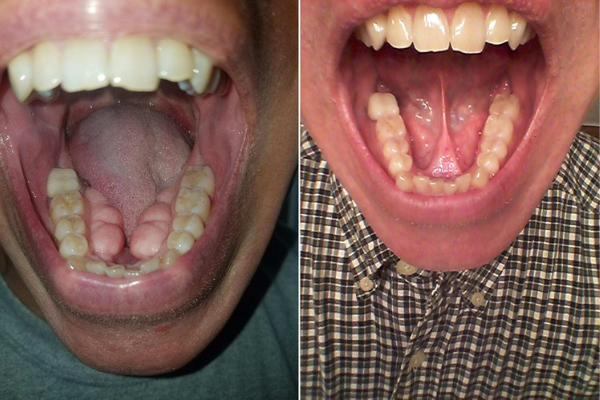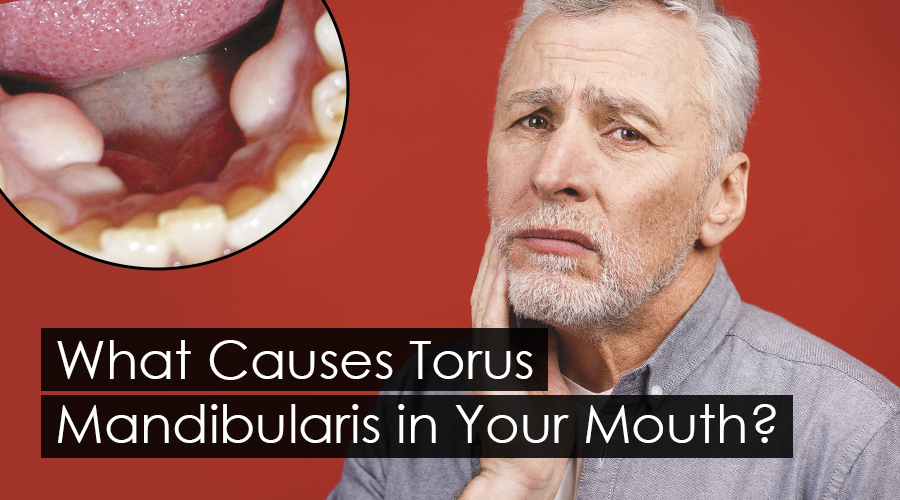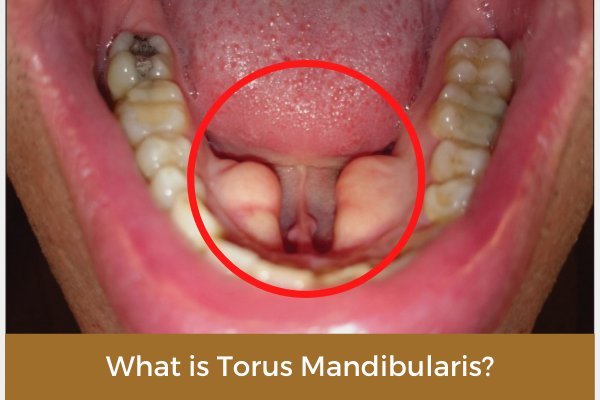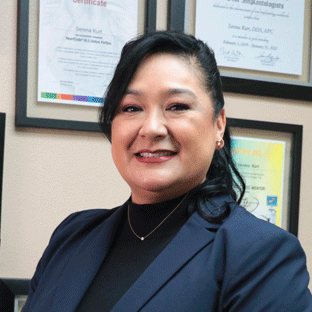Torus mandibularis sounds more like a Harry Potter spell than an oral issue. But unlike that famous wizard, this condition is very much real.
It isn’t as common, but it is always good to know what it is all about. In this article, we’ll explain some of the most important details you should know in case you’re starting to experience it for yourself.
So, keep reading to get familiarized with this strange condition.
What is Torus Mandibularis?
Torus mandibularis (or tori) is a condition that can cause pain and discomfort with some nearly unnoticed symptoms. It’s a bony growth that appears on the lower jaw, underneath the tongue, and on the side.
They are known for not looking the best and being quite painful when you eat certain foods. Still, as bad as they are, they don’t indicate other significant issues in your health.
So in most cases, this oral anomaly does not result in any significant consequences. However, it can be inconvenient if it continues to grow because it’ll complicate and disrupt oral functions.
The size of your tori can change during your life, and in extreme circumstances, they can even grow as far as touching in the middle of your mouth. This condition can make denture manufacture more difficult.
If your dentist needs to remove tori, they can perform surgery to minimize the amount of bone, but the tori rebuilds if the surrounding teeth are still subjected to local stress.
What Causes a Torus Mandibularis?
A variety of circumstances can cause mandibular tori. To begin with, this illness affects more men than women and can be passed down from father to son.
Other concerns include stress on the jaw bone and bruxism. Because this disorder is more common in early adulthood, it is thought that mandibular tori results from local pressures rather than genetic effects.
How Can You Know if You Have Torus Mandibularis?
Their manifestation is quite apparent. A bony growth appears beneath and on the side of the tongue. You can have one or many developments, and they can appear on one side or both sides of your mouth.
While this illness usually is asymptomatic, it can occasionally cause complications. If you wear dentures, the growth may cause your lower denture to fit incorrectly.
It’s possible that wearing your dentures turns uncomfortable and slips out of place. In some circumstances, the soft tissues that cover the tumor can become ulcerated.
While most symptoms of the mandibular torus are innocuous, the following are the most common:
- Inflamed gums
- Throat pain
- Loose teeth
- Tonsils seem irritated
Does Torus Mandibularis Go Away?

Even if you don’t have any symptoms, you should visit the dentist regularly to see how the growth progresses or if you have any at all. If your dentist determines that your growth is torus mandibularis, it’s possible they advise you not to seek treatment.
Why? Because these benign growths should typically be left alone. The surgical removal may only be necessary if your growth is causing you discomfort or interfering with your dentures.
When the tori begin to obstruct speech, surgery may be a possibility. Alternatively, your dentist may recommend surgery to prevent the overgrowth bone from interfering with denture implantation if you wear a dental denture.
A complete diagnosis requires a visit to your dentist in Clairemont. A dental expert like Dr. Serena Kurt can remove the growth with traditional surgical tools or newer procedures. So make sure to consult her if you begin noticing some of the symptoms in your mouth.
What Should You Take Into Account After Removing Your Torus?
After surgery, the dentist frequently gives pain relievers and anti-inflammatory medication and instructions on how to care for the wound in the days ahead.
The most important thing is to keep the mouth as clean as possible to avoid infections and eat soft, room-temperature food whenever feasible. It’s also crucial to stay hydrated and avoid alcoholic beverages and smoking.
Make sure you’re doing your best to take proper care of yourself so that you can have a quick recovery with no additional complications.
Keep in mind that some issues (hematoma, edema, suture opening, infection, etc.) can arise during the postoperative period, so be aware of any symptoms and visit your Clairemont dentist if the healing process is not progressing as it should.
If you have torus mandibularis and it’s causing you discomfort, book a consultation with Serena Family & Cosmetic Dentistry to monitor your condition and see what your options are.
Our dental office’s location is in Clairemont, San Diego. We offer high-quality, personalized dental services for you and your family at fair costs. So make sure you choose only the best for your smile.




Leave a Reply